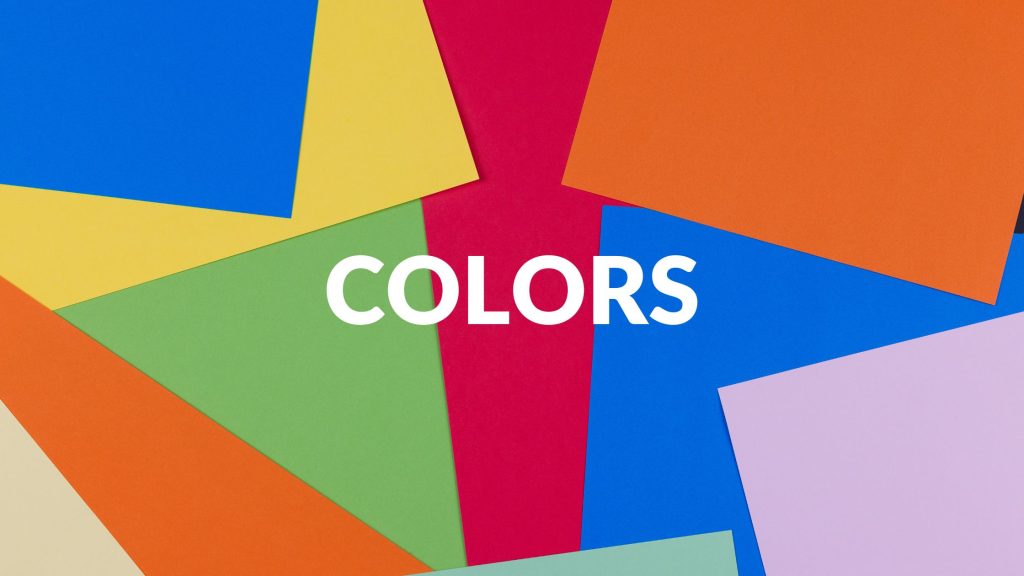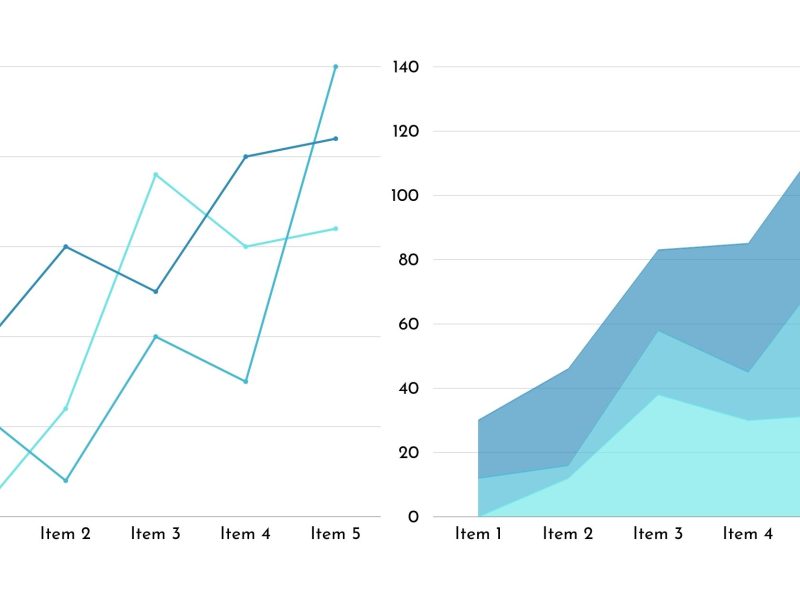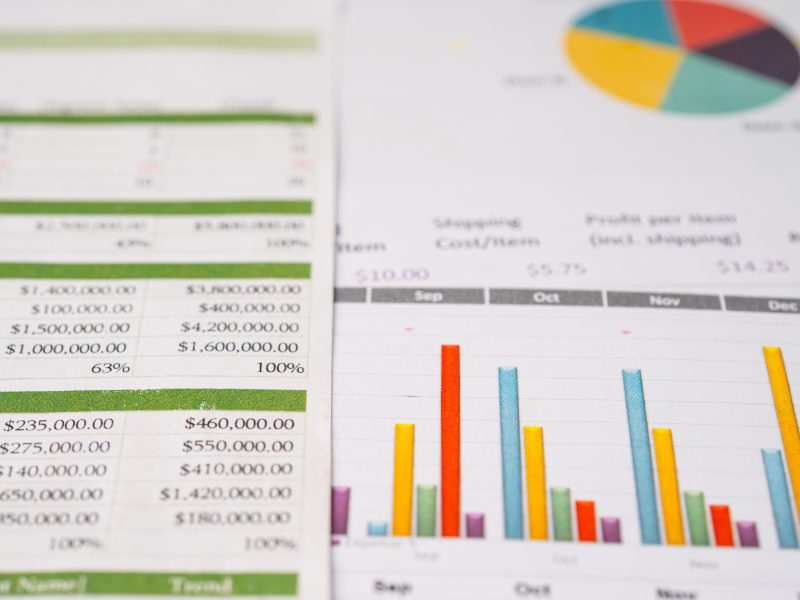When it comes to presenting data effectively, choosing the right colors for graphs can make a significant difference. Whether you’re crafting an engaging presentation, preparing an in-depth report, or designing infographics, the colors you select can greatly enhance visual impact and clarity.
This article explores the realm of data visualization to highlight the best colors to use when creating graphs. This will help elevate your data-laden graphs to new or higher levels of effectiveness without compromising any piece of information.
| ☑Quick Answer |
| The best colors for graphs are those easily distinguishable from one another. This is crucial, especially for color-blind individuals. Use a combination of contrasting colors such as green, yellow, red, and blue. Avoid using similar hues or shades that may cause confusion. |
Understanding the Emotional Impact of Colors

Colors can evoke a wide range of emotions and have the power to affect moods/feelings. While individual experiences and cultural backgrounds can influence these responses to some extent, certain color associations tend to be relatively universal.
Here are some common emotional associations with colors:
Red: It is often associated with energy, passion, and intensity. It can also evoke feelings of urgency or danger.
Blue: Blue is commonly associated with calmness, trust, and serenity. It can promote a sense of stability and reliability.
Yellow: This color is often linked to optimism, happiness, and creativity. It can grab attention and stimulate mental processes.
Green: Green is interrelated with nature, growth, and harmony. It can represent freshness, health, and balance.
Purple: Purple is often associated with royalty, luxury, and spirituality. It can also evoke a sense of creativity and mystery.
Orange: It is commonly associated with enthusiasm, warmth, and excitement. Orange can create a feeling of energy and enthusiasm.
Black: Black is often associated with power, elegance, and formality. It can also represent mystery or even sadness.
White: White is interrelated with purity, innocence, and simplicity. It can evoke feelings of cleanliness and neutrality.
It’s important to note that cultural and personal experiences can influence individual responses to colors. Additionally, different shades and combinations of colors can also create different emotional effects.
How to Choose the Best Colors for Graphs

Graphs are meant to make it easier to convey information, not make it more confusing. A well-designed graph communicates data quickly to the target audience; even those with minimal data literacy will understand it.
However, poorly made graphs will only confuse the most brilliant analysts. That is why color selection is crucial when creating graphs or charts.
Asides from understanding the emotional impact of colors, you need to follow some tips when creating or designing your graph. Here are the tips:
1. Make use of colors that will only reflect the theme of the data
Always avoid highly contrasting colors in your graphs, though there is an exception or two to this rule. Use colors that accurately reflect the theme of the information you are visualizing. This makes graphs quite easier to understand.
2. Show different values using shades of the same color
There’s nothing wrong with using a uniform color appearance on a graph. Color different sections of the graph using unique shades of the same colors. This makes it easier for analysts to focus only on the data with almost zero distraction by the colors.
However, avoid alternating abruptly between dark and light bars. A good rule of thumb is having colors progressing in a gradient.
3. Avoid using colors on opposite sides of the color wheel
Another excellent way to avoid confusing those who read your graphs is by not using colors on opposite sides of the color wheel. The contrast between these colors will be too much and can easily distract your poor readers from the data you’re trying to explain.
But you can do one of two things: pick a warm color palette or opt for a cool color palette.
4. Make use of colors that won’t distract readers from the information
This is considered one of the most crucial points to consider when selecting the best color for graphs. Any color you use on your graphs should make your data easier to understand. They should be easy on the eyes, not hard to see or extremely muted.
This also includes shying away from glaring neon colors and using more than a few different colors. If your graphs are packed with too many colors, your readers will be confused.
Do not forget to use gray in your graphs since it is practically the most crucial color for putting unimportant data in the background.
5. Emphasize important lines with bright colors
Sometimes, you may need your readers to pay attention to a specific data point. In such cases, use a bright color that distinguishes one section, bar, or line in a graph from the rest.
Frequently Asked Questions (FAQs)
1. What colors to avoid in data visualization?
Avoiding complementary colors – such as green and red, blue and orange – and bright colors for backgrounds is crucial. These hues have a high contrast ratio.
2. What is the 3 color rule in graphic design?
The rule of 3 colors is quite simple and straightforward: pick only one primary color. Then pick at least two other complementary colors.
Conclusion
Selecting the right colors for graphs is critical for engaging viewers and effectively conveying information. One can create easily interpretable visualizations by considering the primary purpose of the graph, the principles of color psychology, and the target audience.
Vibrant shades add emphasis and highlight crucial data points, while neutral colors like gray may serve as a strong foundation. Therefore, you should ensure accessibility for different individuals, especially those with color vision deficiencies. Moreover, maintaining consistency in color choices throughout a report or presentation can promote comprehension and enhance readability.


